DATASHEET
POWDERRANGE® 718
Applicable specifications: ASTM F3055
Associated specifications: UNS N07718, DIN 2.4668, AMS5662, AMS5664

Type analysis
Single figures are nominal except where noted.
| Nickel | 50.00–55.00 % |
| Niobium + Tantalum | 4.75–5.50 % |
| Cobalt | 1.00 % |
| Silicon | 0.35 % |
| Nitrogen | 0.03 % |
| Sulfur | 0.015 % |
| Iron | Balance |
| Molybdenum | 2.80–3.30 % |
| Aluminum | 0.20–0.80 % |
| Copper | 0.30 % |
| Oxygen | 0.03 % |
| Boron | 0.006 % |
| Chromium | 17.0–21.0 % |
| Titanium | 0.65–1.15 % |
| Manganese | 0.35 % |
| Carbon | 0.08 % |
| Phosphorus | 0.015 % |
Description
PowderRange® 718 is known as the “workhorse” nickel-base superalloy, and is a key material for high temperature applications in aerospace, energy, and industrial applications. It is an age-hardenable alloy designed to display exceptionally high yield, tensile, and creep-rupture properties at temperatures up to 1300°F (704°C). The sluggish age-hardening response of 718 permits annealing without spontaneous hardening during heating and cooling, as well as highly customizable heat treatments and subsequent mechanical properties for different applications.
PowderRange® 718 for additive manufacturing is highly processable due to good phase stability, minimal segregation, and low crack susceptibility. The latter two are due to Carpenter Additive’s tight control on residual elements. Although PowderRange® 718 is precipitation hardenable, it still displays excellent mechanical properties in the as-processed state.
Key Properties
- Tensile strength, fatigue resistance, and creep resistance up to 1300°F (704°C).
- Customizable properties through heat treatment
- Resistance to chlorides, stress corrosion, and sulfide stress cracking
Markets
Applications:
- Jet engine and high-speed airframe parts
- Instrumentation devices
- Gas turbine components
- Oil and gas tooling
- Impellers for high temperature operation
Powder properties
| Part Number | PowderRange 718 F | PowderRange 718 E |
| Application | L-PBF1 | EB-PBF or DED1 |
| Maximum Particle Size | Max 1 wt% > 53 µm2 | Max 10 wt% > 106 µm2 |
| Minimum Particle Size | Max 10 vol% < 15 µm3 | Max 10 wt% < 45 µm2 |
| LSD Percentile | D10, D50, D903, reported | |
| Atomization | Vacuum Induction Melted, Argon Gas Atomized | |
| Apparent Density (G/CM3) | Measured according to ASTM B2124 and reported | |
| Hall Flow (S/50G) | Measured according to ASTM B2135 and reported |
1 ASTM/ISO 52900: Laser — Powder Bed Fusion (L-PBF), Electron-Beam Powder Bed Fusion (EB-PBF), Directed Energy Deposition (DED)
2 ASTM B214 Standard Test Method for Sieve Analysis for Metal Powders
3 ASTM B822 Standard Test Method for Particle Size Distribution of Metal Powders and Related Compounds by Light Scattering
4 ASTM B212 Standard Test Method for Apparent Density of Free-Flowing Metal Powders Using the Hall Flowmeter Funnel
5 ASTM B213 Standard Test Method for Flow Rate of Metal Powders Using the Hall Flowmeter Funnel
Testing of powder will fulfill certification requirements to Nadcap Materials Testing and ISO/IEC 17025 Chemical, per relevant ASTM procedures
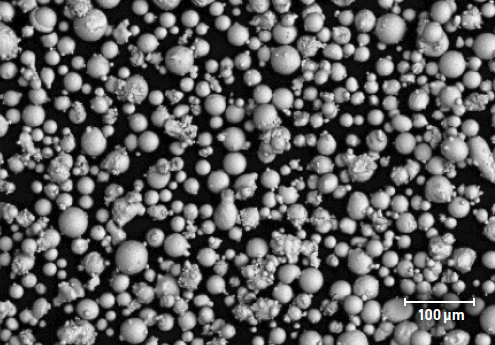
FIGURE 1 — SEM IMAGE OF TYPICAL POWDERRANGE 718 POWDER
Additive manufacturing process guidance
ASTM F3055: ADDITIVE MANUFACTURING NICKEL ALLOY (UNS 07718) WITH POWDER BED FUSION
Laser-Powder Bed Fusion(L-PBF)
Solution Anneal andPrecipitation Heat Treatmentcondition(Sol/Pre)
Hot IsostaticPressed condition(HIP/Sol/Pre)
Machinability
ASTM F3055: ADDITIVE MANUFACTURING NICKEL ALLOY (UNS 07718) WITH POWDER BED FUSION
CONDITION
TRANSVERSE (X-Y PLANE)
LONGITUDINAL (Y-Z PLANE)
NOTES
As-built
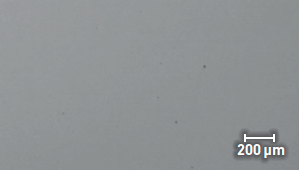
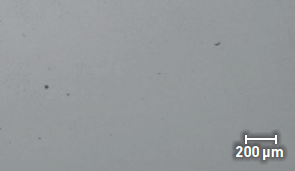
Mean densities greater than 99.9%
HIP/Sol/Age
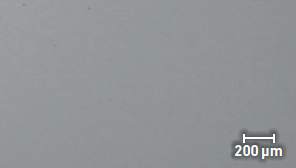
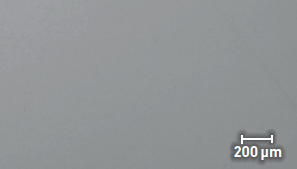
Up to 100% density
As-built, etched6
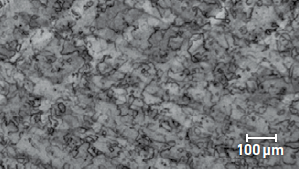
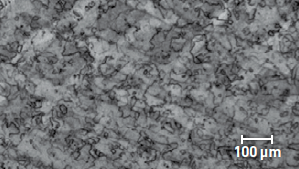
Clean weld tracks visible Minimal spatter porosity
Sol/Pre, etched6
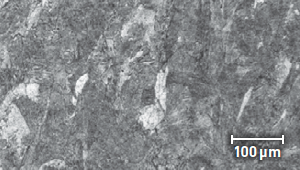
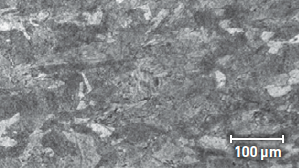
Non-equiaxed / anisotropic grain size: ASTM 47 Delta phase present
HIP/Sol/Pre, etched6
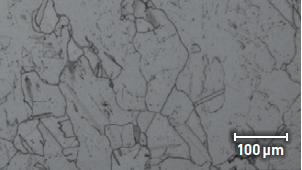
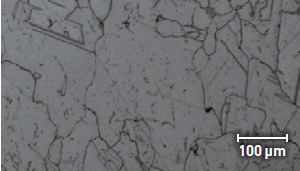
Equiaxed grain sizes ASTM 2-7 (average 5)7 No Delta phase present Delta phase present
6 Etched with Waterless Kalling’s Reagent
7 ASTM E112 Standard Test Method for Determining Average Grain Size
Typical achievable mechanical properties

I8 Average of a minimum of 5 samples taken from across the extents of a build plate in each orientation and for each heat treatment. Testing performed in accordance with ASTM E8/E8M-16a (tensile), ASTM E23-18 (impact energy) and ASTM E18-19 (hardness). Additional data may be available through a wide range of consortia and other collaborations. Please contact Carpenter Additive for additional information. 9 ASTM F3055-14a Heat Treat Condition “D, F” Minimum Tensile Requirements
Corrosion resistance
IMPORTANT NOTE: The following 4-level rating scale (Excellent, Good, Moderate, Restricted) is intended for comparative purposes only and is derived from experiences with wrought product. Additive manufactured material may perform differently; corrosion testing is recommended. Factors that affect corrosion resistance include temperature, concentration, pH, impurities, aeration, velocity, crevices, deposits, metallurgical condition, stress, surface finish, and dissimilar metal contact.
| Nitric Acid | Good |
| Phosphoric Acid | Moderate |
| Sodium Hydroxide | Good |
| Sea Water | Moderate |
| Humidity | Excellent |
| Sulfuric Acid | Moderate |
| Acetic Acid | Good |
| Salt Spray (NaCl) | Excellent |
| Sour Oil/Gas | Good |
Similar materials
| Company |
| Other Generic Names |
| 3D Systems |
| GE (Concept Laser) |
| EOS |
| DMG Mori (Realizer) |
| Renishaw |
| SLM Solutions |
| Alternative Title |
| Alloy 718, 718, Nickel 718 |
| LaserForm Ni718 |
| Nickel 718 |
| NickelAlloy IN718 |
| -- |
| In718-0405 |
| IN718 |
For additional information, please
contact your nearest sales office:
The mechanical and physical properties of any additively-manufactured
material are strongly dependent on the processing conditions used to
produce the final part. Significantly differing properties can be obtained by
utilizing different equipment, different process parameters, different build
rates and different geometries. The properties listed are intended as a
guide only and should not be used as design data.
The information and data presented herein are typical or average values
and are not a guarantee of maximum or minimum values. Applications
specifically suggested for material described herein are made solely for the
purpose of illustration to enable the reader to make his/her own evaluation
and are not intended as warranties, either express or implied, of fitness for
these or other purposes. There is no representation that the recipient of
this literature will receive updated editions as they become available.
Unless otherwise specified, registered trademarks are property of
CRS Holdings Inc., a subsidiary of Carpenter Technology Corporation.

